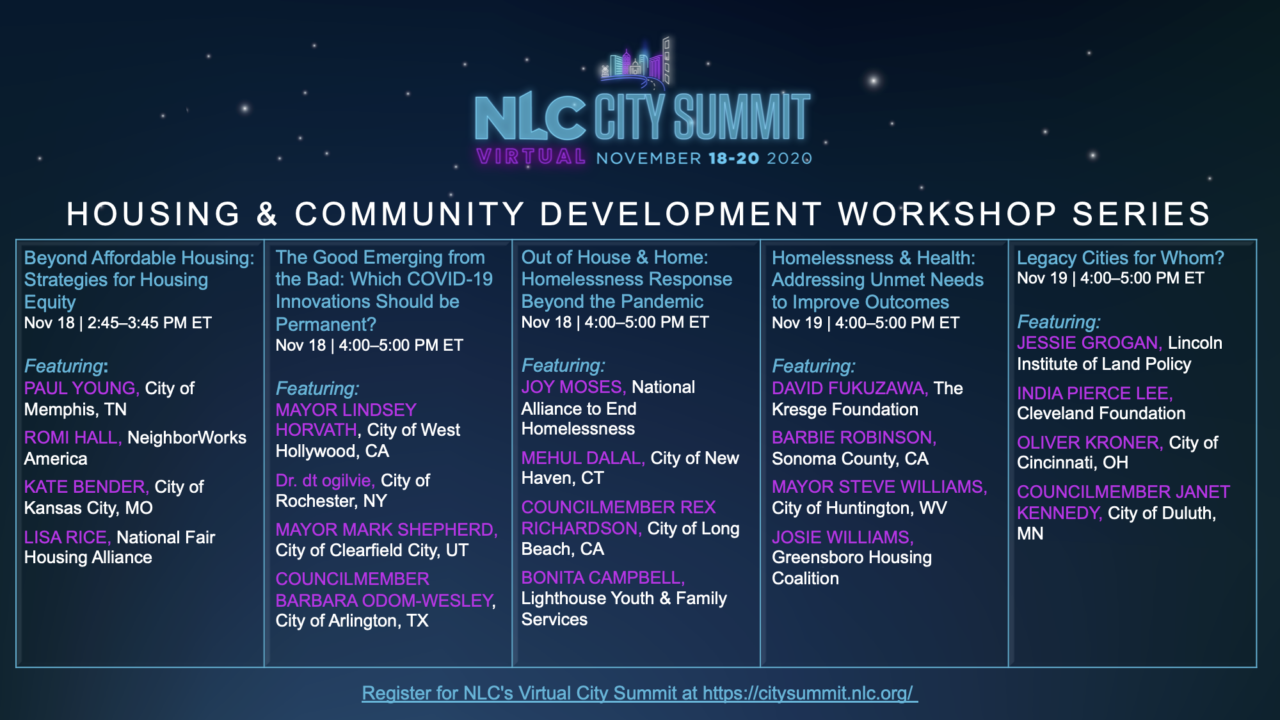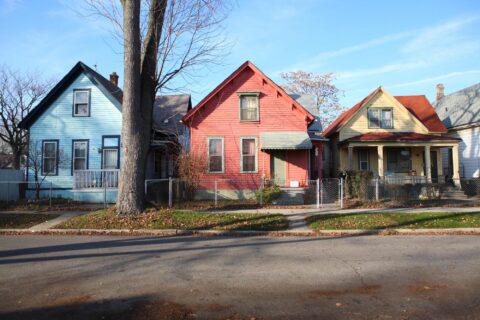As the nation continues to navigate the effects of the coronavirus pandemic, many cities remain challenged by an uptick in eviction filings as the country awaits a sorely needed, but yet to be passed, federal relief package. This has left cities, towns and villages with the heightened task of meeting local housing stability costs during a time when municipal budgets are reeling from sharp declines in local revenues, and COVID-19 emergency assistance funds struggle to keep up with demand.
Of special concern are the nation’s legacy cities, also known as post-industrial cities. Home to between 15-20 million of the nation’s residents, it is projected those legacy cities will likely face a greater number of COVID-19 recovery challenges due to having local economies that are largely reliant on declining or vulnerable industry sectors, such as manufacturing and service, as well as having poverty rates that often exceed the national average.
Additionally, legacy cities have yet to amend the stark racial disparities associated with access to resources and opportunities that commonly disadvantage residents who are Black, Indigenous and Latinx, along with communities of color. As a result, legacy cities have spent decades working to rebound from rapid population decline, a growing prevalence of crumbling infrastructure and vacancies and systemic policies that have contributed to the housing inequities experienced today.
Revitalization and Recovery in Legacy Cities
In spite of these challenges, legacy cities have become known for their innovation and resiliency and are leveraging these very traits to facilitate a more equitable recovery. Traditionally, revitalization and recovery in legacy cities have been imbalanced, with areas such as downtown corridors experiencing rapid growth while other disinvested areas remain in a state of distress.
Legacy cities have yet to amend the stark racial disparities associated with access to resources and opportunities that commonly disadvantage residents who are Black, Indigenous, and Latinx, along with communities of color.
The concentration of investments and resources has not only left the physical assets within neglected neighborhoods to deteriorate but has impacted the livelihoods of those remaining, often Black or lower-income residents, as well. Acknowledging the complex nature of revitalization needs, legacy cities such as St. Louis, Missouri, and New Haven, Connecticut, are employing both place-based and people-based strategies that support an equitable recovery for all residents and neighborhoods.
Presently, the City of St. Louis is experiencing difficulty in retaining its Black population, with an estimated 3,000 Black residents leaving the city between 2018 and 2019. Boasting a housing stock that consists of roughly one in five homes being vacant, housing and community advocates have attributed this distinct population decline to on-going disinvestment and substandard living conditions in predominantly Black neighborhoods across the city.
In an effort to bring greater housing justice and opportunity to St. Louis residents, the St. Louis Affordable Housing Trust Fund Coalition, a group of more than 27 local organizations, developed campaign and advocacy actions to petition for the reinstatement of the city’s Housing Trust Fund. Leveraging community partnerships, data, and media advocacy, the coalition demonstrated the need for quality, healthy housing in all St. Louis neighborhoods.
Now reinstated, the housing trust fund will assist the City of St. Louis in providing a greater number of anti-displacement resources and to bolster programs that stabilize households, contribute to equitable development, and provide services to individuals experiencing homelessness. In an effort to support impacted households and individuals during COVID-19, city officials have elected to retain the housing trust funding even in light of recent budget challenges; a hopeful sign that housing equity will continue to be a priority for years to come.
Like St. Louis, New Haven, Connecticut experienced a large decline in population during the 20th century but has since seen its population rebound. The city is still plagued, however, by high poverty and unemployment rates and a large number of individuals experiencing homelessness, although that number has declined slightly since the early 2010s following a more coordinated response from government officials, shelters, funders, and health centers.
Even with recent progress, the impacts of COVID-19 have left New Haven with the task of supporting not only those who are currently experiencing homelessness but those at-risk of facing homelessness as well. In response to COVID-19, New Haven, CT was able to rapidly bolster their response to homelessness by utilizing a Coordinated Access Network, which leverages 2-1-1 to connect individuals experiencing homelessness with available housing options. Additionally, the City of New Haven works collaboratively with community partners and city agencies to assist formerly incarcerated residents with securing housing upon release and it redirects low-level drug offenders to services and resources rather than seeking prosecution.
Since the onset of COVID-19, New Haven has not only leveraged state and federal funding to strengthen its existing homelessness services, but the city’s Board of Alders Finance Committee unanimously approved the use of $100,000 to fund a study on non-police community response strategies. This evaluation will make it possible to optimize the first response system for appropriately handling mental health crises, chronic homelessness and substance use disorders.
Looking Ahead
Legacy cities can achieve a more equitable recovery by prioritizing both people and place-based solutions, and by ensuring that economic investments are equitably distributed to create quality neighborhoods and economic opportunity for all residents. By embedding equity in comprehensive housing strategies, legacy cities will help steward strong communities in the wake of COVID-19 and beyond.
Continue the Conversation at City Summit

As you and your city think about recovery and resiliency, the National League of Cities is here to be a thought partner and convener of leaders in the field. Join industry experts at City Summit to engage on topics such as Legacy City recovery, strategies for housing equity and innovations, and developing an effective response to the homelessness and health crisis.
Attend A Workshop
Register today to attend the upcoming Housing & Community Development Workshop Series, airing live during NLC’s 2020 Virtual City Summit Conference.










